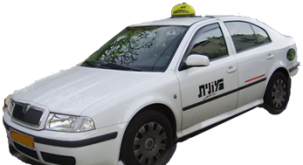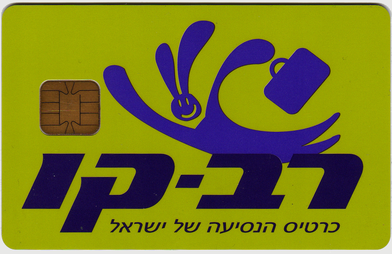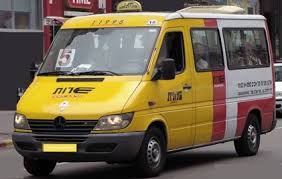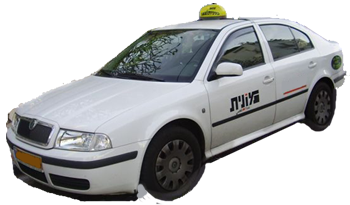Local Transportation
The main methods of transportation in Israel are walking, biking, taking the bus, riding in a sherut, hailing a taxi, or riding the train.

Be careful when choosing a taxi. Make sure you trust the driver, and be vigilant when he is driving. Some taxi drivers are bad drivers. Never use a private taxi (the ones that crowd outside airports and bus/train stations) because they are much more expensive.

What/when is Shabbat?
Shabbat, the Jewish Sabbath/day of rest, lasts from Friday evening until Saturday night.
How will it affect my weekend travel plans in Israel?
In Israel, Shabbat is institutionalized. Public transportation will not run, public/government offices are closed, and you will find that many stores and restaurants are closed during this time.
How can I get the most out of my weekend?
Plan ahead!
The last train on Fridays will depart between 3-5ish (always check the Israel Railways Schedule for exact times). The first trains leaving on Saturday night typically begin departing between 8:30-10p.
Many students choose to leave on Thursday night (barring work commitments Friday) to their weekend destinations.
Moniyot sherut (shared vans) will still drive, although you may have to wait longer (during Shabbat) for the vans to fill up before they depart.
Busses
The main bus system is Egged, which may be accessed here.
Moovit is especially helpful for navigating the bus system. Bus stops are nearly always covered, and they have the lines that stop there printed on the side. Some of the stops have a digital screen that tells you how long until the next bus arrives.
You can only pay for a bus in cash or with a Rav Kav. Fares will be about 6 shekels for inside the city, and can be as much as 100 shekels to go between cities. Within 90 minutes, you can change busses as many times as you like, as long as you use your Rav Kav, which may be acquired at any central bus station during business hours. When you load a Rav Kav, you get extra money added for free, so it's more efficient to use. Some busses require you to insert your Rav Kav like a credit card; others allow you to tap. Unless you have an Israeli ID number, you can only load your Rav Kav at a physical loading station, although these are common.
Busses to Eilat are the only ones that need to be purchased beforehand. Busses do not run during Shabbat, except within Haifa (although the busses are infrequent.)

Trains

Trains are more enjoyable to ride than busses; they have fewer stops and are much smoother. However, the lines have much less flexibility. The Ben Gurion Airport is located right off of the train. Check the Israel Railways App to see what trains are running when. Tickets range from 10 shekels to 60 shekels, depending on the duration of the ride. You can purchase train tickets at kiosks inside train stations with a credit card or Rav Kav.
Some train cars have charging outlets for every seat, whereas some only have a few for the whole car. The trains will be especially crowded on Thursdays, and they do not run during Shabbat. There is not a culture of giving up your seat for someone-- extra passengers usually sit in the space between cars or stand. Some cars have luggage racks.
The cars at the northern end of the train are reserved seating; you must pay an extra 5 shekels to sit in this car, but you are guaranteed a seat, which can be handy for the Thursday rush. Trains do not run during Shabbat, and do not run throughout the night.
Sheruts

Sheruts are shared taxis that travel more directly than busses. To find a Sherut, look up the stops or use Moovit. Go to the pickup place, enter the sherut, and wait for it to fill up. Once the sherut starts moving, pass money up to the driver.
Sheruts are convenient and much cheaper than taxis. However, they do not leave until they are full; you may have to wait two minutes or an hour, depending on time of day, route, and demand. Sherut drivers are also notoriously dangerous. Most sheruts will not drop you off at the exact location you request, but will drop you off near where you need to go. They are convenient for inter-city travel during Shabbat.
Taxis

Private taxis in Israel can be extremely expensive, and public taxi drivers don't always speak English. If you decide to call a cab, make sure to set the meter or the price before entering the car. Make sure you trust the driver, and be vigilant when he is driving. Some taxi drivers are bad drivers. Never use a private taxi (the ones that crowd outside airports and bus/train stations) because they are much more expensive. Uber exists in Israel, but isn;t any good; use Gett instead. Gett works like Uber in that it gives you the price and lets you track the driver. Gett drivers have to have good ratings in order to continue driving, so they usually offer better service than your typical cab driver. Taxis are extremely expensive and drivers can be aggressive; try to use other methods of transportation, if available.
Taxis run at all hours and to anywhere, although it may be difficult to find a driver willing to make a trip longer than forty minutes.
Walking
Walking in Israel is just like in any other city. However, the signals are slightly different.
Traffic moves on the right side of the road. When crossing streets, pedestrians will see either a red man or green man (green=go). However, there is not a countdown for pedestrians for when the cars will receive the green light; it goes straight from green to red. Israeli drivers will honk, and it's okay.
Drivers see green, yellow, red. When the light is about to turn green again, it will first turn yellow to signal drivers the light is close to turning green.
Always wait for the green man to signal that you can safely cross. Some pedestrian crossings have buttons you can press to cross faster.

